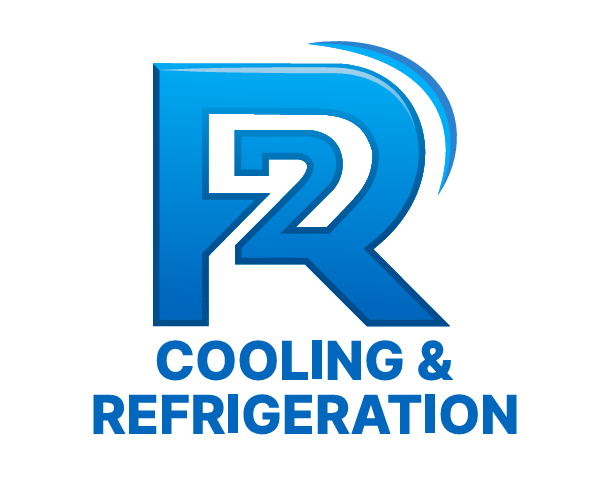How to Maintain Your HVAC System Effectively: A Step-by-Step Guide
- 2R Cooling & Refrigeration

- Aug 29
- 3 min read
Keeping your HVAC system in top shape not only ensures year-round comfort but also helps you save on energy bills and extend the life of your equipment. Follow this comprehensive, step-by-step guide to perform simple DIY checks and know when to call in the pros.

1. Monthly Checks: The Basics
Replace or Clean Air Filters
Why it matters: Clogged filters reduce airflow, force your system to work harder, and compromise indoor air quality.
How to do it:
Turn off your HVAC system at the thermostat or breaker.
Slide out the filter; inspect for dust buildup.
If disposable, replace with the correct MERV-rated filter. If reusable, rinse with water, let dry fully, then reinstall.
Tip: Mark your calendar or set a reminder to check filters every 30 days during high-use seasons.
Check Thermostat Settings & Batteries
Why it matters: Incorrect settings or dead batteries can prevent your system from turning on or cycling properly.
How to do it:
Ensure the thermostat is set to “Heat” or “Cool” based on the season.
Replace batteries annually (or sooner if the display dims).
Consider upgrading to a programmable or smart thermostat for finer control and energy savings.
Inspect & Clear Condensate Drain
Why it matters: A blocked drain line can cause water damage and trigger the system to shut down.
How to do it:
Locate the condensate drain (a PVC pipe near the indoor unit).
Pour a cup of distilled white vinegar through the access point to clear algae or mold.
Flush with water afterward.
2. Quarterly Tasks: A Deeper Dive
Clean Evaporator & Condenser Coils
Why it matters: Dirty coils reduce heat exchange efficiency, leading to higher energy consumption and wear on the compressor.
How to do it:
Turn off power at the breaker.
Gently brush away debris on coils (use a soft brush).
Spray with coil-cleaning solution, rinse with low-pressure water, and let dry.
Inspect Refrigerant Lines
Why it matters: Leaks or insufficient refrigerant levels can impair cooling performance and damage the compressor.
How to do it:
Look for oil spots or corrosion on the insulated suction line.
If you suspect a leak or notice ice buildup, call a certified technician for a pressure test and recharge.
Examine Electrical Connections
Why it matters: Loose or corroded connections can cause shorts, tripped breakers, or system failures.
How to do it:
With power off, inspect wiring at the indoor and outdoor units.
Tighten any loose terminals and look for signs of burning or melting.
If you’re uncomfortable working with electricals, schedule a professional safety check.
3. Annual Maintenance: Professional Tune-Up
Even with diligent DIY care, an annual professional inspection ensures optimal performance and safety. A certified HVAC technician will:
Test System Performance
– Measure airflow, temperature differentials, and overall efficiency.
Check Refrigerant Levels & Pressure
– Ensure proper charge and identify any hidden leaks.
Lubricate Moving Parts
– Extend the life of motors, fans, and bearings.
Calibrate Controls & Safety Features
– Verify thermostat accuracy and the operation of limit switches and safety shut-offs.
Inspect Ductwork & Seals
– Detect leaks or gaps that can lead to energy loss and uneven heating/cooling.
Pro Tip: Enroll in a preventive maintenance plan. Regularly scheduled tune-ups often come with priority service, discounts on repairs, and peace of mind that your system is covered.
4. Seasonal Preparations
Before Summer (Cooling Season):
Clean outdoor condenser unit of leaves, grass, and debris.
Test cooling mode for proper temperature drop.
Before Winter (Heating Season):
Reverse ceiling fans to push warm air downward.
Inspect and seal ductwork near attic or crawl spaces.
Test heat mode and carbon monoxide detectors.
5. Tips to Maximize Efficiency & Comfort
Upgrade to a Programmable/Smart Thermostat: Automate temperature setbacks during work hours or at night, saving up to 10–15% on energy bills.
Improve Insulation & Sealing: Proper attic, wall, and window insulation reduces load on your HVAC system.
Maintain Indoor Humidity (30–50%): Use humidifiers/dehumidifiers or IAQ solutions to balance moisture—this helps your system feel more efficient and improves comfort.
Clean Around Outdoor Units: Keep a 2-foot clearance around condenser units to ensure unrestricted airflow.
6. When to Call a Professional Immediately
Strange banging, grinding, or squealing noises
Frequent short-cycling (system turns on and off rapidly)
Foul odors (could indicate mold or electrical issues)
Significant drops in airflow or cooling/heating capacity
Visible water leaks around the unit

Conclusion & Next Steps
By following this step-by-step maintenance routine—monthly filter checks, quarterly coil and line inspections, and an annual professional tune‑up—you’ll keep your HVAC system running efficiently, lower energy costs, and avoid unexpected breakdowns. Ready to protect your comfort and investment? Contact 2R HVAC/R today to schedule your next service.




Comments